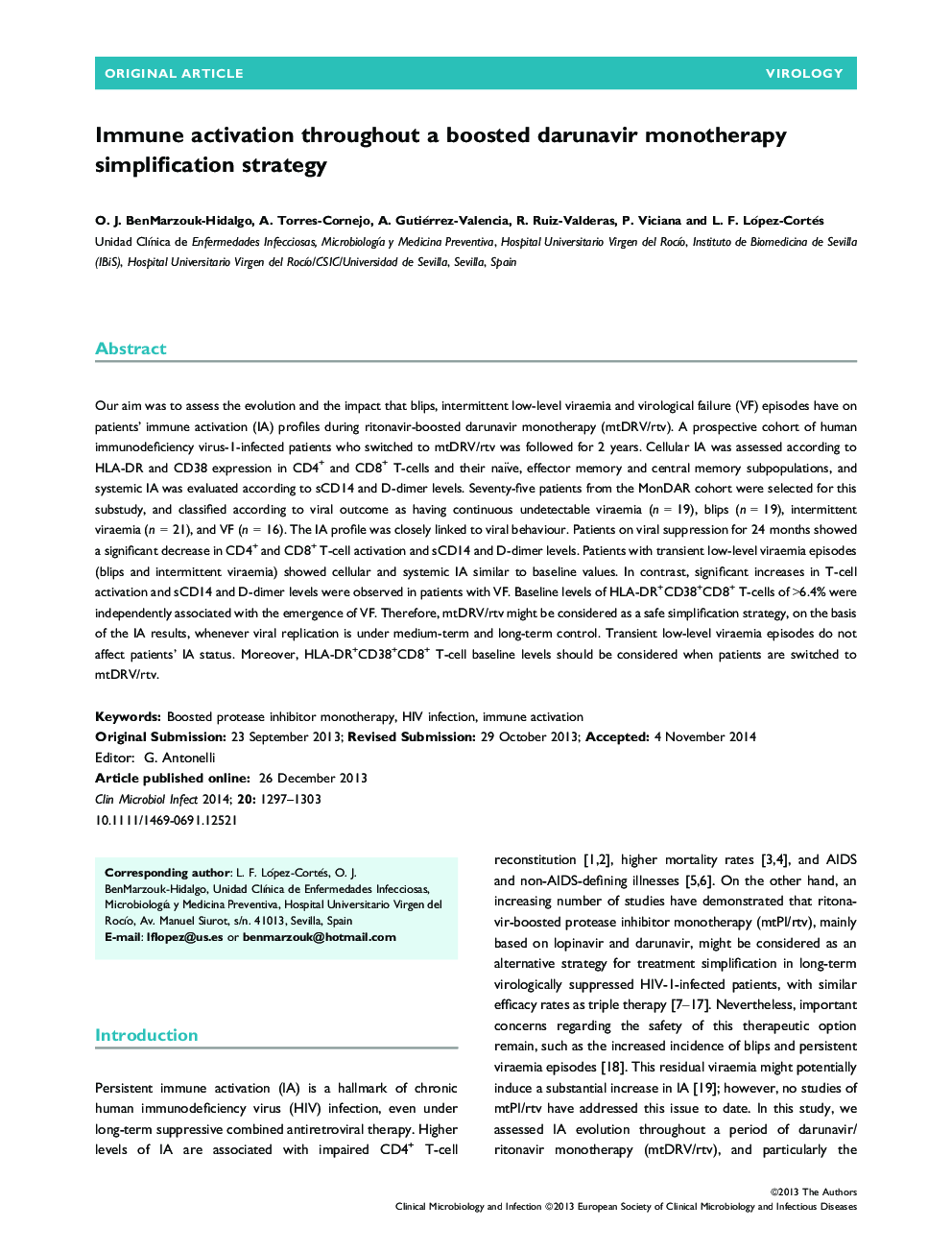| Article ID | Journal | Published Year | Pages | File Type |
|---|---|---|---|---|
| 6129776 | Clinical Microbiology and Infection | 2014 | 7 Pages |
Abstract
Our aim was to assess the evolution and the impact that blips, intermittent low-level viraemia and virological failure (VF) episodes have on patients' immune activation (IA) profiles during ritonavir-boosted darunavir monotherapy (mtDRV/rtv). A prospective cohort of human immunodeficiency virus-1-infected patients who switched to mtDRV/rtv was followed for 2 years. Cellular IA was assessed according to HLA-DR and CD38 expression in CD4+ and CD8+ T-cells and their naïve, effector memory and central memory subpopulations, and systemic IA was evaluated according to sCD14 and D-dimer levels. Seventy-five patients from the MonDAR cohort were selected for this substudy, and classified according to viral outcome as having continuous undetectable viraemia (n = 19), blips (n = 19), intermittent viraemia (n = 21), and VF (n = 16). The IA profile was closely linked to viral behaviour. Patients on viral suppression for 24 months showed a significant decrease in CD4+ and CD8+ T-cell activation and sCD14 and D-dimer levels. Patients with transient low-level viraemia episodes (blips and intermittent viraemia) showed cellular and systemic IA similar to baseline values. In contrast, significant increases in T-cell activation and sCD14 and D-dimer levels were observed in patients with VF. Baseline levels of HLA-DR+CD38+CD8+ T-cells of >6.4% were independently associated with the emergence of VF. Therefore, mtDRV/rtv might be considered as a safe simplification strategy, on the basis of the IA results, whenever viral replication is under medium-term and long-term control. Transient low-level viraemia episodes do not affect patients' IA status. Moreover, HLA-DR+CD38+CD8+ T-cell baseline levels should be considered when patients are switched to mtDRV/rtv.
Keywords
Related Topics
Life Sciences
Immunology and Microbiology
Microbiology
Authors
O.J. BenMarzouk-Hidalgo, A. Torres-Cornejo, A. Gutiérrez-Valencia, R. Ruiz-Valderas, P. Viciana, L.F. López-Cortés, G. Antonelli,
